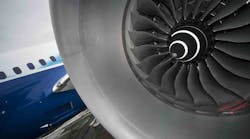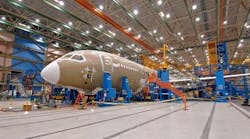Producing a wide variety of pumps and control valves for the petroleum industry, part volumes that have practically doubled in the past few years, and a JIT business philosophy contributed to the need for a new machining cell at Kimray Inc. (www.kimray.com). The cell had to provide strong throughput and high flexibility, and be accurate enough to meet the shop’s stringent quality requirements on components in the 8-in.-cube and smaller size range.
After thoroughly checking out several different types of machine tools, Kimray focused on a multi-center type machine consisting of three, 4-axis machining center modules, each with tool magazine storage and a central pallet indexing table.
The system was the MultiCenter from Porta North America (www.porta-solutions.com), which the company said is extremely fast – typically comparable to the output of four good horizontal machining centers. But, what really sold Kimray was the machine’s ability to run different parts through the cell at the same time. That would allow the shop to run parts with annual lot sizes of 1,000 or less through the machine together, and cash in on some low-cost production without adding extensive set up time and tooling costs.
Kimray also liked the fact that the Fanuc-controlled MultiCenter was a standard Porta product, significantly improving service and spare parts availability. Another attractive feature was an integrated fault diagnostics system with modem control.
While the MultiCenter can be loaded automatically, Kimray’s plan was to run the machine with a manual load. So, the machine’s well-protected operator’s area and dry-floor enclosure was a plus.
Porta North America, using quotation and time studies, showed how the MultiCenter would provide a noticeable payback for Kimray. However, some of the parts used for the justification were being produced on 50-taper machining centers, and the shop had some concerns about the capability of the 40-taper tool holder of this particular model MultiCenter.
Porta performed test cuts to prove the machine had the necessary rigidity. Since MultiCenters are built on speculation for faster delivery times, the company ran tests on a duplicate machine to the one quoted to Kimray. The tests showed that the machine did, in fact, have the structural rigidity to successfully produce parts previously thought to be best run on 50-taper machines.
Several months after installation, Kimray found that it could run even more of its production across the MultiCenter than initially used to justify the machine purchase. This allowed the shop to bring more work in-house that had been farmed out, thereby gaining better process control and even smaller lot sizes.
A universal fixture concept with ‘A’ or ‘A-B’ load capability made part throughput time on the MultiCenter as much as eight times faster than on conventional machining centers. Simultaneously, setups are straightforward and fast, part changeover times are within two hours, and initial setups for new complex products are done in 10 to 12 hours.







